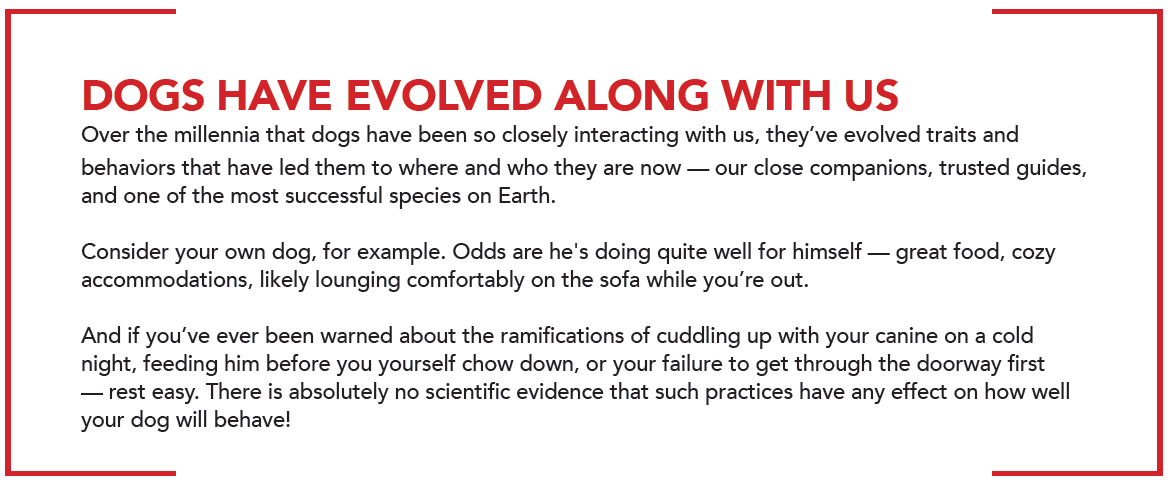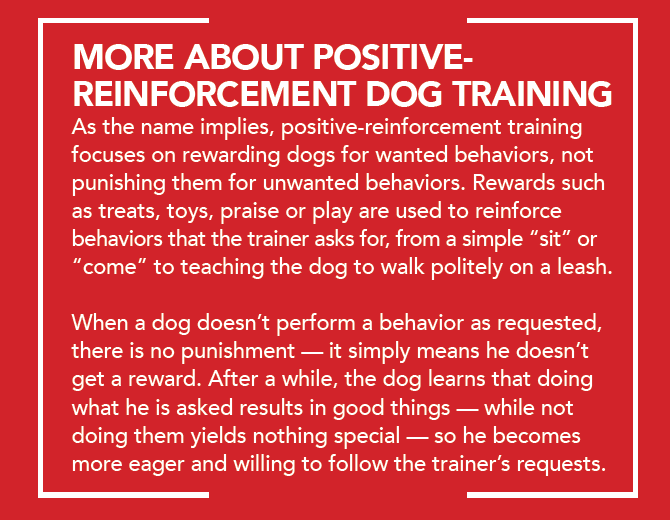Why dominance-based dog training isn’t the answer

Many people still believe that dominance-based dog training is the only way to successfully train their canine companion. Here’s why we need to drop this mindset.
“You need to show him who’s boss.” “He won’t do what you say unless you make it clear you’re the alpha.” You’ve probably heard statements like these before. They imply that dog training must involve establishing yourself as the dominant individual, even if it means using punishment, if you want to succeed. This article will explore the roots of dominance-based dog training and why it’s time to drop it.
My own story
I grew up in the 1970s and 80s alongside my very best friend, a Dalmatian named Baron Von Freckle. He was intelligent, exquisitely beautiful, and ran like the wind. My parents adopted Baron as a puppy in 1973 when I was an infant. Baron had the patience of St. Frances himself, allowing me to rest my head on his spotty body as I drank from my baby bottle and twirled his silky ears in my fingers.
Baron instilled in me a lifelong love of animals, and my future as a dog fanatic was set in stone. I was around seven when I first declared my intentions to become a dog trainer. The reply I would get for years to come was always the same: “You? Oh, sweetie, you wouldn’t make a good dog trainer. You’re too nice. You have to be dominant.”
Discovering a better way to train dogs
Thankfully, I remained stubborn enough to disregard the discouragement, and eventually discovered others like me. I learned training methods taught by positive-reinforcement trainers — wielding treats, playing games and giving loads of praise to the dogs.
The learning theory supporting this type of training is that all animals, including us humans, repeat behaviors that are rewarded. In positive dog training circles, you’re likely to hear comparisons between reinforcing desired behaviors in dogs with how we encourage learning in young children. In fact, positive-reinforcement techniques have proven to be incredibly effective and rewarding for dogs, trainers and animal parents alike.
The dominance training model persists
Even today, however, not everyone agrees. Some trainers still warn against things like letting your dog walk in front of you, go through a doorway before you do, eat before you do, or the ever classic: “If you allow your dog on the bed, you’re not being the alpha.” People are instructed not to view their dogs as children, but instead to “be dominant”.
The dominance model of dog training, based on the belief that the human must be the “alpha”, has been around for a long time, and it’s not going away without a fight. In fact, disagreements between dominance-based trainers and passionate proponents of positive-reinforcement training have become so heated that we received written notices at our last APDT conference reminding us to keep our discussions respectful. If professional dog trainers can’t even agree on how to train, what are dog parents to do?
Positive-reinforcement techniques have proven to be incredibly effective and rewarding for dogs, trainers and animal parents alike.
The roots of dominance theory
Dominance theory was first introduced to the dog training world in the 1940s. It was based on limited studies of captive wolves who displayed confrontational behaviors to become and maintain their alpha positions. Since dogs are descendants of wolves, it seemed appropriate to extend these observations to explaining the behaviors of domesticated dogs as well. Dominance-based dog training really took hold in the following decades…but it began to crumble when research of wolves in the wild, conducted by scientist David Mech, produced entirely different findings.

Unlike the captive wolves, wild wolf packs typically consist of related wolves, including the offspring of the breeding (alpha) pair. In studies conducted from 1986 through 1998, Mech observed not violent challenges for dominance, but wolves who peacefully deferred to the alpha pair. Their behavior much more closely resembled that of a family than a brutal pack of status seekers. Since then, many other wolf researchers have come to the same conclusion: in the wild, wolves’ survival and ability to thrive depends on cooperation, not rivalry, among pack members.
This brings us to the other bone of contention between the two dog training camps — and that is whether it’s even helpful to use studies of wolves, captive or wild, as guiding principles for training our dogs. Behaving the way one believes an alpha wolf would behave in order to create a well-trained dog is the tenet of dominance-based dog training.
…in the wild, wolves’ survival and ability to thrive depends on cooperation, not rivalry, among pack members.
One of the many problems with this approach is that it completely disregards the fact that domesticated dogs have been living with humans for tens of thousands of years. Though animal lovers are often accused of anthropomorphizing their dogs, repeated behavioral studies provide evidence that dogs do in fact have emotions and attributes that have long been considered exclusively human characteristics.
No one is proclaiming that dogs are really just furry humans. But it’s time to acknowledge that our dogs are not wolves, and neither are we. In their position statement on the use of dominance theory in training and behavior modification, the American Veterinary Society of Animal Behavior has this to say:
“Current study into canine behavior has found that dogs, while sharing some traits with their wolf cousins, have many more significant differences. The idea that dog behavior can be explained through the application of wolf behavior models is no more relevant than suggesting that chimpanzee behavior can be used to explain human behavior. Unfortunately, this idea that dogs are basically ‘domesticated wolves’ living in our homes still persists among dog trainers and behavior counselors, as well as breeders, veterinarians, owners and the media.”
It seems the split between dominance-based and positive-reinforcement dog trainers may continue for a while. In the meantime, I believe our growing knowledge about canine behavior will put an end to force-based dominance training once and for all. And if you’re a kind and patient animal lover, you may want to consider a career in dog training yourself. As it turns out, nice people make great dog trainers!





